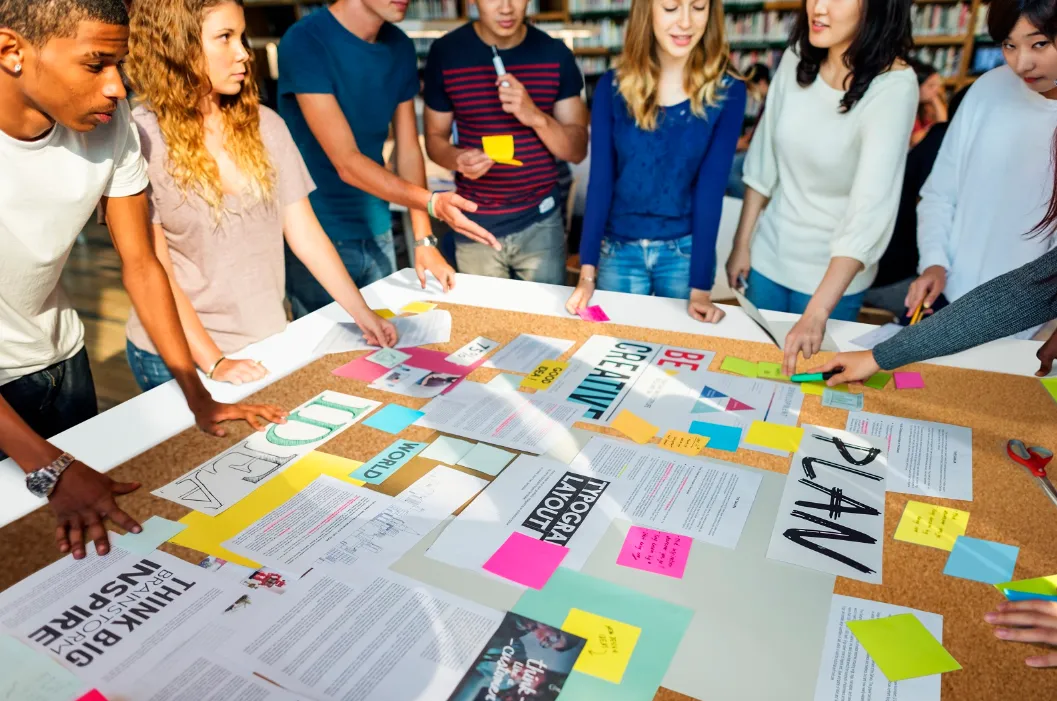The Benefits of Project-Based Learning in K-12 Education
In the evolving landscape of education, there has been a significant shift from traditional, lecture-based instruction to more dynamic, student-centered approaches. One of the most transformative methods gaining traction in K-12 education is Project-Based Learning (PBL). This instructional strategy encourages students to engage in hands-on, real-world projects that foster critical thinking, collaboration, and creativity. This article explores the myriad benefits of Project-Based Learning in K-12 education, emphasizing its impact on student engagement, academic achievement, and the development of essential life skills.
1. Enhancing Student Engagement
Traditional classroom settings often rely on rote memorization and passive learning, which can lead to disengagement, particularly among students who do not thrive under these conditions. PBL, however, transforms the learning experience by involving students in meaningful projects that require active participation. These projects are often designed to solve real-world problems or explore topics that are relevant to the students’ lives, making learning more engaging and enjoyable.
Students are more likely to be motivated when they see the relevance of what they are learning. PBL allows them to take ownership of their education, encouraging them to ask questions, conduct research, and present their findings. This hands-on approach keeps students invested in their learning journey, leading to higher levels of engagement and participation.
2. Fostering Deep Learning and Understanding
One of the key advantages of PBL is its ability to promote deep learning. Unlike traditional teaching methods that often prioritize surface-level knowledge, PBL requires students to delve deeply into a subject. This process involves researching, problem-solving, and applying knowledge in practical ways, which enhances understanding and retention.
In PBL, students must connect various concepts and ideas to complete their projects, leading to a more comprehensive understanding of the subject matter. This holistic approach to learning ensures that students are not merely memorizing facts but are truly grasping the concepts, which is essential for long-term retention and application.
3. Developing Critical Thinking and Problem-Solving Skills
Critical thinking and problem-solving are two of the most important skills that students need to succeed in the 21st century. PBL provides a fertile ground for developing these skills as students are frequently required to analyze complex problems, consider multiple perspectives, and devise innovative solutions.
In a PBL environment, students are often faced with challenges that do not have straightforward answers. This ambiguity encourages them to think critically about the issues at hand, explore various solutions, and evaluate the outcomes of their decisions. By engaging in this iterative process, students develop a robust problem-solving toolkit that they can apply in both academic and real-world contexts.
4. Promoting Collaboration and Communication
Collaboration is a cornerstone of PBL. Most projects are designed to be completed in groups, requiring students to work together to achieve a common goal. This collaborative environment mirrors the real world, where teamwork and effective communication are essential for success.
Through PBL, students learn how to communicate their ideas clearly, listen to others, and negotiate differences. These experiences help them develop strong interpersonal skills that are invaluable in both their academic and future professional lives. Moreover, working in teams helps students appreciate diverse perspectives, fostering a sense of empathy and understanding that is crucial in today’s globalized world.
5. Encouraging Creativity and Innovation
PBL encourages students to think outside the box and explore creative solutions to problems. Unlike traditional education, which often emphasizes standardized testing and rigid curricula, PBL allows for flexibility and innovation. Students are given the freedom to approach problems in unique ways, experiment with different ideas, and take risks without the fear of failure.
This emphasis on creativity not only makes learning more enjoyable but also prepares students for future challenges. In a rapidly changing world, the ability to innovate and adapt is crucial, and PBL helps cultivate these qualities from a young age.
6. Building Self-Management and Organizational Skills
PBL requires students to manage their time, set goals, and stay organized—skills that are essential for success both in school and beyond. As students work on long-term projects, they must learn to break down tasks, prioritize, and meet deadlines. This process teaches them self-discipline and responsibility, as they are accountable for their own learning.
These self-management skills are particularly important as students progress through their education and eventually enter the workforce. The ability to plan, organize, and execute complex tasks independently is a key predictor of success in any field.
7. Connecting Learning to Real-World Applications
One of the most significant benefits of PBL is its emphasis on real-world applications. Projects are often designed to address real issues, whether they are local, national, or global in scope. This connection to the real world helps students see the relevance of their education and understand how their learning can be applied outside the classroom.
By engaging with real-world problems, students gain a better understanding of the world around them and develop a sense of social responsibility. This practical approach to learning also helps bridge the gap between theory and practice, making education more meaningful and impactful.
8. Preparing Students for the Future
As the world becomes increasingly complex and interconnected, the skills required for success are evolving. PBL prepares students for this future by equipping them with the skills and mindset needed to navigate an ever-changing world. Through PBL, students learn how to think critically, solve problems, work collaboratively, and communicate effectively—all of which are essential for success in the 21st century.
Moreover, PBL encourages a growth mindset, where students learn to view challenges as opportunities for growth rather than obstacles to be avoided. This mindset is crucial for lifelong learning and adaptability, both of which are necessary in a rapidly changing world.
9. Assessing Learning in a More Comprehensive Way
Traditional assessments, such as multiple-choice tests, often fail to capture the full range of a student’s abilities. PBL, on the other hand, provides a more comprehensive assessment of student learning. Through projects, teachers can evaluate a student’s ability to research, think critically, solve problems, work in teams, and communicate effectively.
This holistic approach to assessment allows for a more accurate measure of a student’s skills and knowledge. It also provides valuable feedback that can guide future learning and development.
10. Supporting Differentiated Instruction
Every student learns differently, and PBL is particularly effective in accommodating diverse learning styles. Because projects can be tailored to individual interests and strengths, PBL allows for differentiated instruction, where each student can work at their own pace and level of understanding.
This personalized approach to learning ensures that all students, regardless of their abilities or backgrounds, have the opportunity to succeed. By allowing students to explore topics that interest them and work in ways that suit their learning styles, PBL fosters a more inclusive and supportive learning environment.
Conclusion
Project-Based Learning is a powerful instructional strategy that offers numerous benefits for K-12 students. By enhancing engagement, fostering deep understanding, and developing critical skills, PBL prepares students for both academic success and future challenges. As education continues to evolve, the adoption of PBL in K-12 classrooms will undoubtedly play a crucial role in shaping the next generation of learners and leaders.



